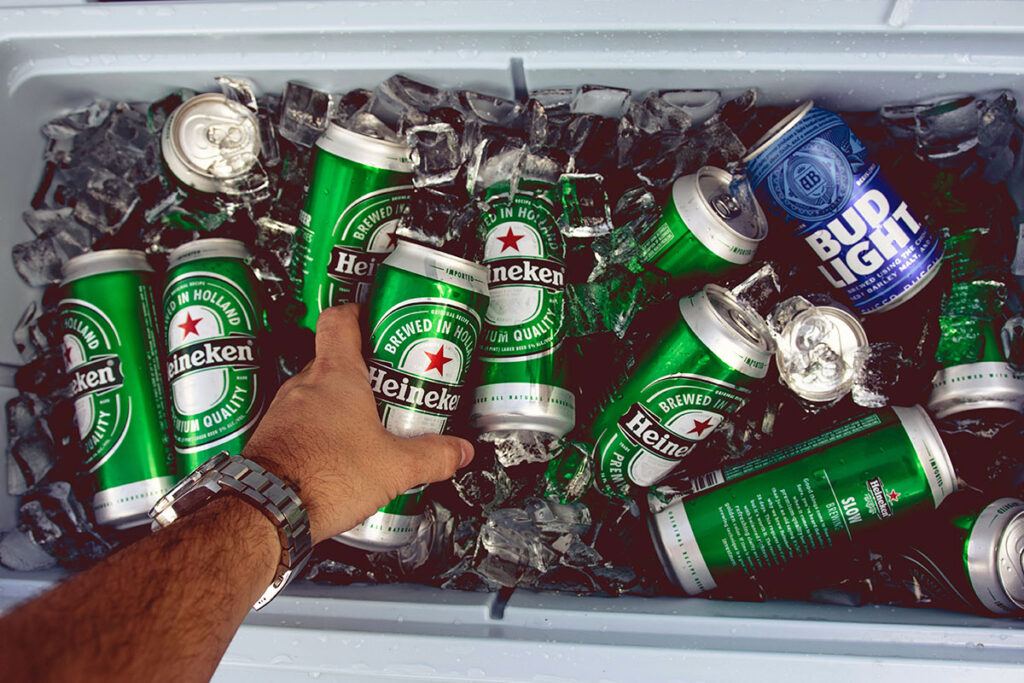The Supplemental Nutrition Assistance Program (SNAP) is a federal program that offers financial assistance to low-income individuals and families to help them buy nutritional food. Also known as food stamps, the program helps ensure that all Americans have access to healthy food. The Food and Nutrition Service (FNS) works with states to manage and distribute these temporary benefits.
SNAP provides a monthly allowance on an electronic card, much like a debit card. This card is used to buy groceries at many stores across the country. It's designed to help people meet their basic nutritional needs so they can spend less and save on utility bills and other expenditures.
SNAP Eligibility Requirements

Eligibility for SNAP is determined based on income, resources, and family size. Applicants in eligible households must also meet specific work requirements to continue receiving benefits.
Definition of a Household
To be eligible for SNAP benefits, everyone who lives together is considered one household. Your household must meet certain requirements to be deemed eligible for a food benefit.
Certain people who live together, such as spouses and children under 22, are part of the same household, even if they purchase and prepare meals separately. There are special rules for people who are 60 or older or disabled.
Income and Resource Limits
Your household might be eligible if you have limited income and resources. The current allowable amount is $2,750 or $4,250 if someone in the household is 60 or older or disabled. However, things like your home, resources from SSI or welfare, and most retirement and pension plans won't be counted.
| Household Size | Gross monthly income (130% of poverty) | Net monthly income (100% of poverty) |
| 1 | $1,473 | $1,133 |
| 2 | $1,984 | $1,526 |
| 3 | $2,495 | $1,920 |
| 4 | $3,007 | $2,313 |
| 5 | $3,518 | $2,706 |
| 6 | $4,029 | $3,100 |
| 7 | $4,541 | $3,493 |
| 8 | $5,052 | $3,886 |
| Each additional member | +$512 | +$394 |
Rules about vehicles can vary. Some vehicles won't be counted as a resource if they are used for work. Other vehicles can be counted as a resource, depending on their value.
SNAP Work Requirements
Most SNAP recipients must meet certain work requirements to maintain eligibility. This includes registering for work and accepting jobs if offered. There are rules for adults without children, requiring them to work or be in a work program for at least 20 hours per week to get benefits for more than 3 months in 3 years.
There are some exceptions to these rules. For example, there are special rules for elderly or disabled individuals. Groups like children, seniors, pregnant women, and those with health problems might not have to follow the work rules.
How To Apply for SNAP

You can apply for SNAP benefits online, by mail, or in person. However, you must apply through the state agency where you live.
To find your local SNAP office, view the SNAP state directory.
The first step is to fill out an application form. Be prepared to provide personal information about your income, resources, and household information. Requested documentation can include pay stubs, rent or mortgage statements, Social Security number, utility bills, and payments for child care or child support.
Once you've completed the SNAP application, submit it to your local office or follow the on-screen instructions if you’re applying online.
After submitting your application, you will be scheduled for an interview. Most interviews are conducted over the phone, but you may be required to interview in person if more documentation is required.
If you are asked to mail any documents, make sure you only send copies – don't send originals because you might not get them back.
Appealing a Denial
If your application for SNAP benefits is denied, you have the right to file an appeal and request a fair hearing. You can do this in person at your local office, by phone, or by mail. You must submit your appeal within 90 days from the date of the denial notice.
How To Receive SNAP Benefits

Once you are approved for SNAP assistance, you will receive an Electronic Benefits Transfer (EBT) card in the mail. The card functions just like a debit card. Every month, your benefits are automatically deposited into your account. You can use the EBT card to shop for groceries.
You will also get a notice explaining how long you can receive SNAP benefits. This is known as your certification period. Before your certification period ends, you will receive instructions for recertifying. Your benefits will continue if you are determined to be eligible.
SNAP-Approved Groceries

Recipients of SNAP benefits can purchase a wide assortment of approved foods.
Need help locating a SNAP retailer? Find SNAP stores in your neighborhood.
- Breads and Cereals: With SNAP assistance, you can purchase various types of bread, grains, cereals, and pasta.
- Meat, Poultry, and Fish: SNAP covers a wide range of protein sources, including beef, chicken, pork, fish, and other seafood.
- Snacks and Non-Alcoholic Beverages: While the focus of SNAP assistance is on nutritious foods, you can also buy snack foods like chips, crackers, and cookies, as well as non-alcoholic beverages such as soda and juice.
- Dairy: Dairy products like milk, cheese, yogurt, and butter are eligible for purchase.
- Seeds and Plants for Gardening: SNAP allows you to purchase seeds and plants that can grow food for your household. This includes vegetable seeds, fruit tree saplings, and herb plants.
- Fruits and Vegetables: Fresh, frozen, canned, or dried fruits and vegetables can be bought using SNAP benefits.
Items NOT Eligible for SNAP Benefits

While the SNAP program covers a wide variety of nutritious food products, it doesn't cover non-food items like toiletries, pet food, or alcoholic beverages.
Disqualified items include:
Hygiene and Cosmetics: SNAP is specifically for food purchases, so personal care items like soap, shampoo, makeup, or toothpaste are not eligible.
Beer, Wine, Liquor, Cigarettes, or Tobacco: Since SNAP is designed to provide nutritional support, you cannot use it to purchase alcoholic beverages or tobacco products.
Hot, Prepared Food: Prepared hot foods that are meant to be eaten immediately, like hot deli items or restaurant meals, cannot be bought with SNAP.
Vitamins, Medicines, and Supplements: Supplements are not eligible. This includes over-the-counter vitamins, medicines, and herbal supplements.
Non-food Items: SNAP benefits are strictly for human food consumption. This means that household cleaning supplies, pet foods, and general household supplies like paper towels or dish soap are not covered.
Live Animals: You cannot use SNAP to buy live animals. There are a few exceptions, such as shellfish or fish that are removed from water, or animals that are slaughtered before you pick them up from the store.
Reporting SNAP Fraud
While it may be tempting to purchase something you aren’t supposed to, it’s important to follow the rules. The Food and Nutrition Service takes fraud very seriously. Breaking the program's rules is considered recipient fraud, and could result in fines or criminal charges.
Consequences of committing fraud include:
- You could be temporarily or permanently barred from using SNAP.
- You may have to pay back any benefits you obtained illegally.
- You might even face criminal charges, fines, or prison time.
You can anonymously report SNAP fraud in several ways:
- Contact your state’s SNAP office
- By phone: (800) 424-9121
- Submit a report to USDA OIG
- By mail:
USDA Office of Inspector General
PO Box 23399
Washington, DC 20026-3399
More Food Assistance Programs

If you need additional help, other food assistance programs may be able to help:
Child and Adult Care Food Program (CACFP)
The Child and Adult Care Food Program (CACFP) provides reimbursements for nutritious meals and snacks to eligible children and adults in participating care centers. The goal of CACFP is to promote wellness and support the healthy growth and development of children and adults in the United States.
Eligible centers include child care centers, day care homes, adult day care centers, after-school care programs, emergency shelters, and facilities for adults over 60.
National School Lunch Program (NSLP)
The NSLP provides low-cost or free lunches to children each school day. Established in 1946 under the National School Lunch Act, the program helps ensure that children receive proper nutrition during the school day to support their growth, development, and educational success.
Women, Infants, and Children (WIC)
WIC provides support to pregnant women, new mothers, and young children, offering both food assistance and health services. WIC plays a significant role in laying the foundation for a healthy future for many women and children.
Through targeted nutritional support, WIC helps ensure that these vulnerable groups receive the necessary nourishment for healthy growth and development. Education about proper nutrition, breastfeeding support, and referrals to other social services are also integral parts of the WIC program.
Food Pantries

A local food pantry can be a valuable resource for individuals and families in need. Many food pantries provide a variety of food items, including fresh produce, canned goods, and sometimes even frozen meals, free of charge.
To access these services, you may need to show proof of need or residency, depending on the specific rules of the pantry. Connect with a local community center or search online to find nearby food pantries and learn about their specific requirements.
Emergency Food Assistance Program (TEFAP)
TEFAP helps supplement the diets of low-income people by providing them with emergency food and nutrition assistance.
How the program works:
The USDA buys nutritious, quality food and sends it to state agencies based on the state's number of unemployed and low-income residents. The states then distribute the food to selected local agencies like food banks, community action agencies, soup kitchens, and food pantries. These organizations either give the food directly to those in need or use it to prepare communal meals, and the program also includes funds to help with the storage and distribution of the food.





